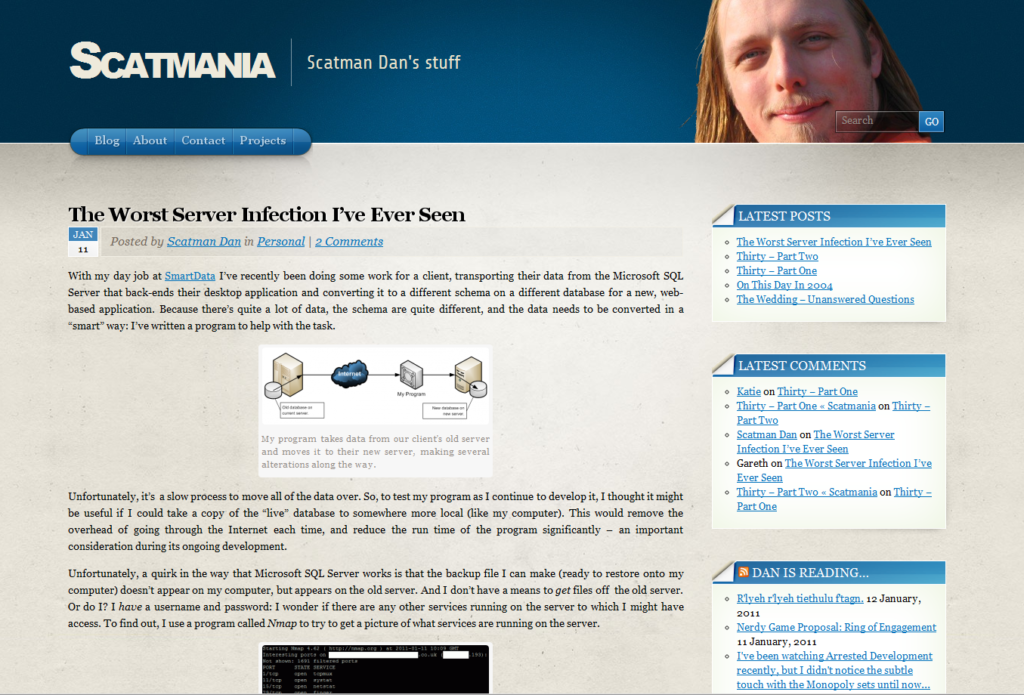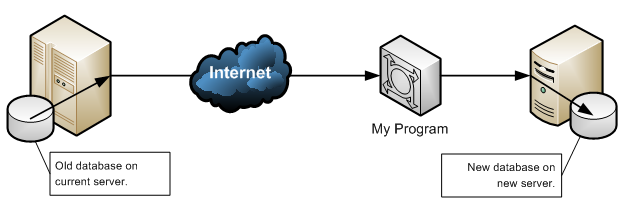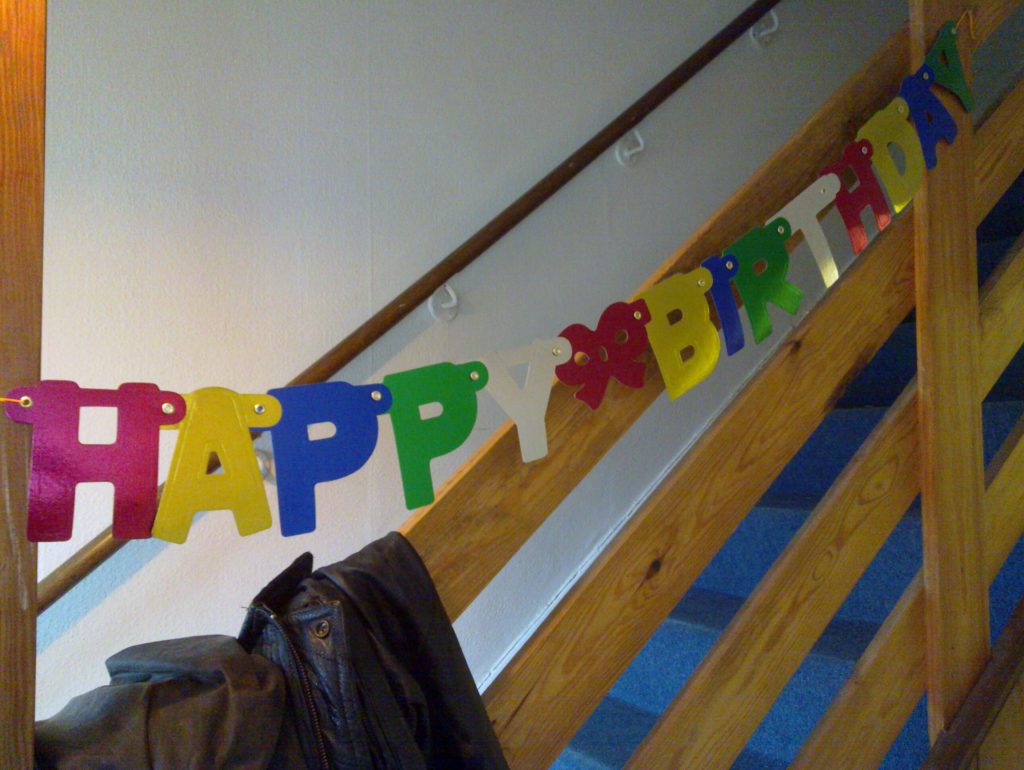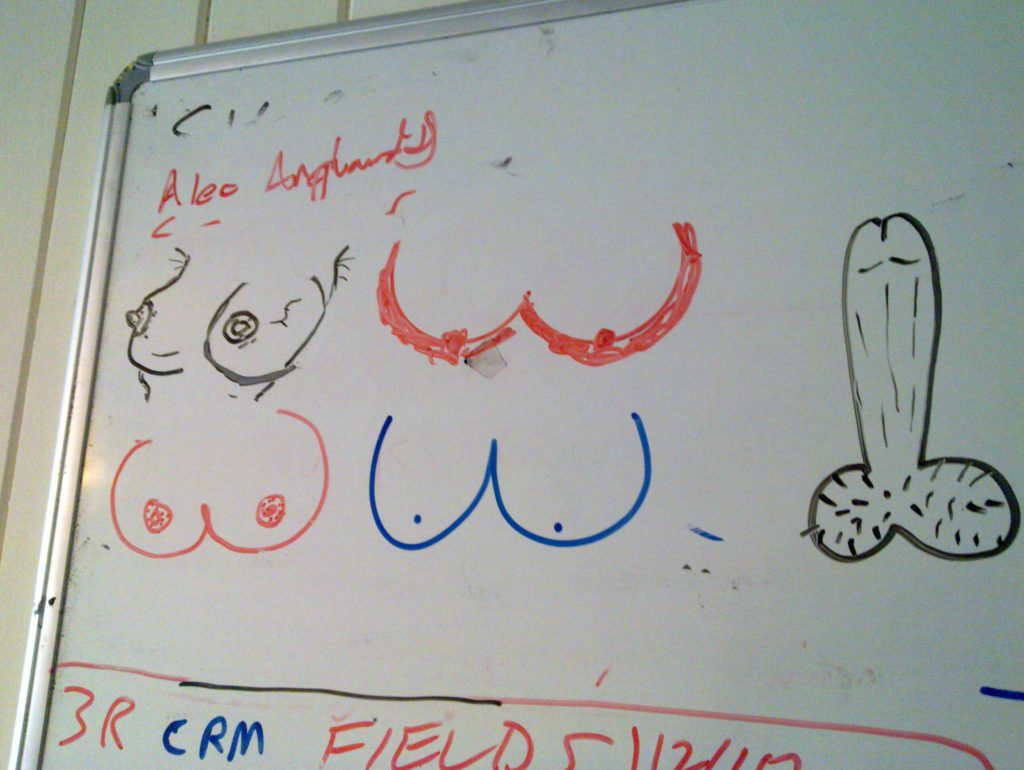This checkin to GC1J956 Sliding in the quarry reflects a geocaching.com log entry. See more of Dan's cache logs.
Far too muddy, I guess: couldn’t even get close! Will try again another time.
This checkin to GC1J956 Sliding in the quarry reflects a geocaching.com log entry. See more of Dan's cache logs.
Far too muddy, I guess: couldn’t even get close! Will try again another time.
This checkin to GC17QTE Britannia - Never At Sea reflects a geocaching.com log entry. See more of Dan's cache logs.
I can’t decipher the numbers! I’ve come up with values for B and C which are too low to be able to deduct some of the values that the formula requires me to… maybe there’s something I’m missing…
This checkin to GC21WAA Famished Equine reflects a geocaching.com log entry. See more of Dan's cache logs.
This cache has been removed as it is no longer intact (lid and magnet missing, camouflage fallen off). Photo included. I’ll arrange to deliver this to the owner so that it can be repaired and replaced, hopefully.
Oh yeah: I changed the look-and-feel of scatmania.org the other week, in case you hadn’t noticed. It’s become a sort-of-traditional January activity for me, these years, to redesign the theme of my blog at this point in the year.
This year’s colours are black, white, greys, and red, and you’ll note also that serifed fonts are centre-stage again, appearing pretty-much-universally throughout the site for the first time since 2004. Yes, I know that it’s heavier and darker than previous versions of the site: but it’s been getting fluffier and lighter year on year for ages, now, and I thought it was time to take a turn. You know: like the economy did.

Aside from other cosmetic changes, it’s also now written using several of the new technologies of HTML5 (I may put the shiny new logo on it, at some point). So apologies to those of you running archaic and non-standards-compliant browsers (I’m looking at you, Internet Explorer 6 users) if it doesn’t look quite right, but really: when your browser is more than half as old as the web itself, it’s time to upgrade.
I’ve also got my site running over IPv6 – the next generation Internet protocol – for those of you who care about those sorts of things. If you don’t know why IPv6 is important and “a big thing”, then here’s a simple explanation. Right now you’re probably viewing the IPv4 version: but if you’re using an IPv6-capable Internet connection, you might be viewing the IPv6 version. You’re not missing out, either way: the site looks identical: but this is just my tiny contribution towards building the Internet of tomorrow.
(if you really want to, you can go to ipv6.scatmania.org to see the IPv6 version – but it’ll only work if your Internet Service Provider is on the ball and has set you up with an IPv6 address!)
Something I’ve been thinking about, recently; presented in three parts, for clarity:
Part One – Polyamory and Negotiations
There’s a widely-understood guideline in nonmonogamous relationships that you should always be willing to ask for what you want, not what you think you can get away with. To me, it feels to be a particularly valuable maxim. Like the majority of suggestions touted by the polyamorous community, it’s a tip that holds value for both monogamous and nonmonogamous relationships… but is naturally of more importance to those which are nonmonogamous because these have a tendency to depend more-heavily on honest and open negotiation.
I’m sure I don’t have to spell out to you why asking for what you want (rather than what you think you can get away with) is important. But just in case I do, here’s the three top reasons, as far as I see it:

There are times that it’s okay not to ask for what you want, too, though. Sometimes it’s hard to be sure what you want; and it’s fine to say you need time to think about it. Sometimes
we change our minds (shocking, I know!), and it’s more-admirable to be honest than consistent. Sometimes there are more important things to deal with. There’s no rush.
But it works. The more specific you can be – even to the point of “too much information” – the better this kind of communication can work, because the better your partner understands
you, the better you both can negotiate. As ‘dirty surface’ writes, “I’d like to get my butt caned by a professional Dom while you watch once
every six months or so” represents a very different commitment of time, money and emotional energy than what someone might picture when you say “Let’s hire and share a sex worker
regularly.”
Part Two – The Anchoring Effect
There’s a known psychological phenomenon called the anchoring effect. In order to demonstrate it, I’m going to plagiarise an example used in this article – if you want to see the effect in action; don’t click that link yet! Just follow the instructions below:

You’ll get the answer a little further down the page. But first, it’s time to come clean about something: when you clicked that link to WolframAlpha, you’ll have gone to one of two different pages. There’s a 50% chance that you’ll have found yourself looking at the population data of the United Kingdom (about 62 million), and a 50% chance that you’ll have found yourself looking at the population data of Switzerland (about 7½ million).
If you originally saw the United Kingdom and you guessed lower, or you originally saw Switzerland and guessed higher, you were right: the population of Venezuela is somewhere between the two. But if we took all of the guesses by all of the people who correctly guessed lower than the United Kingdom, and all the people who correctly guessed higher than Switzerland, then – statistically speaking – we’d probably see that the people who looked at the United Kingdom first would make higher guesses as to the population of Venezuela than those people who looked at Switzerland first.
The population of Venezuela’s about 29 million people. What did you guess? And what country were you shown first, when you clicked the link? Leave me a comment and let me know…
The anchoring effect is explored in detail by Ariely, Loewenstein, and Prelec 2004, in which studies are performed on groups of people who are told a (randomly-determined) price for some goods, and then asked to state how much they’d be willing to pay for them: those people who are given higher random values will consistently offer more money for the goods than those who were told a lower value.
It’s not a new idea. For hundreds of years, at least, salespeople have practiced the not-dissimilar door-in-the-face technique (sort-of the opposite of the more well-known foot-in-the-door technique), in which an unsatisfactory offer is made first in order to make the second offer – which is actually what the salesperson wants to sell – seem more desirable than it actually is.
Part Three – Hey, But That Means…
Taking the two previous parts of this article at face value can quickly lead to an unwelcome conclusion: we’re more likely to get what we want when we ask for more than what we want – and then back down to a false compromise position. A greedy but carefully-deployed “salesman” approach has been shown to work wonders when you’re negotiating for a pay rise, selling a product, motivating volunteers, or getting people to under- or over-estimate the value of goods and services. Surely it’d work when negotiating in a relationship, too?
“Hey, honey: it’d really mean a lot to me if I could could have a threesome with you and your mother…”
“What? No way! That’s disgusting.”
“Okay, okay, then… I suppose I could make do with having sex with your sister.”
Despite the extremity of the example above, the answer is that for the individual, this strategy can work: I’ve known people who’ve fallen victim to exactly this kind of con. Worse yet, I suspect that there are perpetrators of this kind of strategy who don’t even realise that they’re doing it: they’re just responding in the Pavlovian style to the “rewards” that they’re getting by continuing to act in what it – let’s face it – an unscrupulous and unethical manner.
Does it work, then? Yes, more’s the pity. But everything it gets for you is something that it’s taking away from your partner, or from your relationship. And maybe that’s the kind of strain that the relationship can take, but there are always limits.
Me? I’ll stick to what I believe in: so far as I can, putting my hand on the table and saying, “Here’s what I’m playing with: what’ve you got?” It’s a trusting and diplomatic strategy, but it’s the best solution to finding the best middle-ground for everyone. There are those who find that it makes them feel too vulnerable – at too much risk of their openness being used against them – to try to say what they want so openly. And to them, I say: if you don’t trust your lover with the way that you feel, then working on that trust that should be your first priority.
Now get on with loving one another, y’all!
They just gosub without return. That is, of course, a joke (with all due apologies to those of you to whom it means nothing), but there’s a kernel of truth in the saying. In their own way, programmers are like authors or artists in that their work can easily outlive them, and their unique and distinct style can be found in their creations: and in that created by those that learn from or imitate them.
This morning I was working on some legacy Perl code that holds together a part of a client’s web site. In particular, I was refactoring the code that displays dates and times in an appropriate format, as part of an effort to simplify the code after fixing a bug that would, under some unusual conditions, use the “pm” suffix for morning times (e.g. 11pm, when it means 11am). Under normal circumstances this would have been a simpler job than it was, but this particular piece of software has been passed from developer to developer, and (until it came into my hands) I’m pretty sure that none of them took the time to understand what their predecessors had done. Several different stylistic and semantic styles are used in the code, and several different solutions are used for the same problem, depending on who was in charge at any given time. In short, the code’s a mess, but the client is on a tight budget and can generally only afford to pay for the minimum amount of work, and not for the sweeping overhaul that the system so badly needs.
I came across a particular line of code, today (evidence, perhaps, of a previous developer looking into a related issue to the one with which I was tasked):
$leu_something .= $hour . " - " . $amorpm;
Even without the developer’s name embedded within the variable name, I could have told you who wrote this code because of its distinct style. Even this single line has a defining appearance of its own, to the trained eye. To illustrate this, consider that the line could equally have been written in any of the following ways (among hundreds of others, without even looking at the optional space characters and interchangeable types of quotation marks used), and would have functioned identically:
$leu_something = $leu_something .= $hour . " - " . $amorpm;
$leu_something .= "${hour} - ${amorpm}";
$leu_something = join($leu_something, $hour, " - ", $amorpm);
$leu_something .= sprintf('%s - %s', $hour, $amorpm);
Some of these methods have specific advantages or disadvantages, but all have the exact same fundamental meaning meaning. However, even from a glance I could tell that this code belonged to the former developer named Leu (and not any of the other developers whose names I’ve seen in the project) because of the style in which he chose to write it.
Non-programmers often fail to understand why I describe programming as being as much an art as a science. The work of a programmer has been compared to the work of a poet, and I agree with this sentiment. Even merely on a superficial level, both computer code and poetry:
Not only that, program code can be beautiful. I’ve examined code before that’s made me smile, or laugh, or that has saddened me, or that has inspired me. I shan’t argue that it’s on a par with the standard of spoken-language poetry: but then, programming languages are not designed to appeal to the pathos, and are at a natural disadvantage. Sometimes the comments for a piece of code can in themselves carry a beauty, too: or they can serve simply to help the reader comprehend a piece of code, in the same way as one can sometimes find guidance in the interpretation of a poem from somebody else’s research.
However, it’s possible to say things with code that one simply can’t convey in the same way, using a spoken language. To prove this point, I’ve composed a short haiku in the medium of the Ruby programming language. For this purpose, I’m defining a haiku as a poem whose lines contain 5, 7, and 5 syllables, respectively. It’s an existentially nihilistic piece called Grind:
def grind(age = 0)
die if age == 78
grind(age + 1); end
Vocalised, it would be read as follows:
Def grind: age equals zero,
Die if age equals seventy-eight,
Grind (age plus one); end.
I enjoy the subtlety its use of recursion to reinforce the idea that every year of your life gives you a bigger burden to carry (and a larger amount of memory consumed). This subtlety does not adequately translate to a spoken language.
The line of code I showed you earlier, though, is neither interesting nor remarkable, in itself. What makes it interesting to me is that it persisted – until today, when I removed it – in this piece of software. The author, Leu, died several years ago. But there will exist software that he wrote, being read again and again by tireless machines on a daily basis, for years to come.
I wonder how long the code I write today will live.
This week, the Internet went mildly crazy for a few minutes when people suddenly started discovering that their astrological sign might not have been what they previously thought. My favourite line in the linked article is “…the Minneapolis Star Tribute published an article, stating that our horoscopes are wrong,” to which my first thought was, “Well, duh.” This all comes about because when Ptolemy accidentally invented contemporary astrology, almost two millenia ago, he never specified whether his system should be based on the calendar year, or on the actual relative positions of the stars. While the calendar year has pretty much remained the same since Ptolemy’s time, our solar system has rotationally drifted slightly relative to the rest of the galaxy, and so the constellations aren’t quite in line with the calendar any more.
In theory, at least, if we were to plot a sun sign by the stars (as is practiced in some Eastern astrology) rather than by the calendar (as is practiced in most Western astrology), that’d make me not a Capricorn, as you might expect, but a Sagittarius.
I had a friend, once, who attached a not-inconsiderable amount of importance to her horoscope. However, she had a strange approach to the subject. I remember one particular morning when she got up and read her horoscope in the newspaper. She didn’t like what she read, and decided that it must therefore be wrong, and instead looked up the one on Teletext instead. Still unsatisfied, she eventually looked up her horoscope on the web, and – finally finding a fortune that she was happy to accept as hers – accepted it.
Thankfully, there’s no cause for concern for me, because I’m an Aquarius. I was born a Capricorn, but I never really felt comfortable as one, so I had my star sign changed to one that I felt suited me better. I have a certificate and everything, printed on an old inkjet printer and folded up in a drawer ever since. Once or twice, people have tried to tell me that it doesn’t work; that you can’t just “change” your star sign simply because you want it to be different. When this happens, I simply point out that my bit of paper is just as official, as believable, and as scientific as astrology is in the first place. And despite the (disputed) idea that our star signs might all have changed, as has flooded Facebook, my scrap of paper still says “Aquarius” on it, as relevant today as it always has been!
With my day job at SmartData I’ve recently been doing some work for a client, transporting their data from the Microsoft SQL Server that back-ends their desktop application and converting it to a different schema on a different database for a new, web-based application. Because there’s quite a lot of data, the schema are quite different, and the data needs to be converted in a “smart” way: I’ve written a program to help with the task.

Unfortunately, it’s a slow process to move all of the data over. So, to test my program as I continue to develop it, I thought it might be useful if I could take a copy of the “live” database to somewhere more local (like my computer). This would remove the overhead of going through the Internet each time, and reduce the run time of the program significantly – an important consideration during its ongoing development.
Unfortunately, a quirk in the way that Microsoft SQL Server works is that the backup file I can make (ready to restore onto my computer) doesn’t appear on my computer, but appears on the old server. And I don’t have a means to get files off the old server. Or do I? I have a username and password: I wonder if there are any other services running on the server to which I might have access. To find out, I use a program called Nmap to try to get a picture of what services are running on the server.

And that’s when I realised that something might be wrong. For those of you who aren’t inclined toward understanding the ins and outs of network security, the screenshot above should be considered to be more than a little alarming. There’s pretty obvious and clear signs that this computer is infected with Trinoo, NetBus, Back Orifice, and quite probably other malware. It’s almost certainly being used as part of denial of service attacks against other computers, and could well be stealing confidential information from our client’s server and the other computers on their network.
How have things gotten so out of control? I’m not sure. I’ve never seen such a rampant runaway set of infections on a server system before. Computers belonging to individuals, especially individuals inclined to installing BonziBuddy, Smiley Central/Cursor Mania, and so on, are often littered with malware, but one would hope that a server administrator might have a little more wisdom than to let unauthorised code run on a server for which they were responsible. At the very least, a Windows-based, Internet-accessible server ought to be running a strict firewall and antivirus software (virtually all antivirus software would have detected all three of the infections I’ve named above).
Just about anybody can get onto the ‘net, these days, and I can just about forgive a regular Jo who says says, “I don’t know anything about computers; I just want to play FarmVille.” It’s disappointing when they end up inadvertently helping to send email advertising “$oft C1ALIS tabs” to the rest of us, and it’s upsetting when they get their credit card details stolen by a Nigerian, but it’s not so much their fault as the fault of the complexities they’re expected to understand in order to protect their new computer. But when somebody’s running a service (as our client is paying for, from a third-party company who’s “managing” their server for them), I’d really expect better.
The Bit for the “Regular Jo”
And if you are a “regular Jo” on a Windows PC and you care enough to want to check that you’re part of the solution and not part of the problem, then you might be interested in a variety of free, trusted:
Edit: And don’t forget to regularly install your Windows Updates. Thanks to Gareth for the reminder that regular Jos should be encouraged to do this, too.
Last weekend, I turned thirty. As I described earlier, I had originally planned to write a retrospective summary of what I’d been doing for my life so far (y’know; what’ve I been up to these decades). I wasn’t terribly satisfied with what I’d written, so far, and by the time that the party was over I’d changed my mind completely. So I threw out everything I’d written so far and wrote this, instead.
Part II: The bit that’s different from what I expected to write.
As I said in Part I, I had originally planned to write a long and drawn-out retrospective, looking back on my life. I wanted to try to encapsulate it in some kind of bubble or capture it in some way that condensed it into something concise and manageable. But every time I tried to begin to put down words to express it, it always came out looking cynical and pessimistic. And that doesn’t reflect how my life has been this far: to the contrary, my original plan to write about the last time years has nestled within it most of the very best years of my life thus far. I took a moment to contemplate my situation: why was I unable to describe this period with the liveliness and joy with which it deserves. And then I realised: the reason that I was writing so pessimistically is because – unusually, those who know me will surely agree – I’ve had a somewhat pessimistic view of the world, recently… and this depressing outlook was infecting my words.
This last year and a bit have been hard, for me. Things like this, and this, and this, and this – among other events – have worn me down and made feel, quite often, that I’m fueled only by nostalgia and that I’ve been struggling to find motivation for the future. Even happy events, like Ruth & JTA’s wedding, have often been an intense emotional rollercoaster ride, full of ups and downs that would be an easy ride under normal conditions but which were each just “one thing to many” when combined with everything else. In short: it’s been a tough year.
The last ten weeks or so have been the worst. Struggling with a variety of different issues and, buried deep in the cold and the dark of a particularly bleak and challenging winter, I’ve periodically found myself a very long way out into the Not OK half of the room.
It’s been particularly unpleasant: not just for me but, I’m sure, for the folks who’ve had to put up with me while I’ve been so irritable and grumpy.
But it’s not all bad. The worst has passed, I think, and things are getting better. I’ve got all the support I could need, and it’s been getting better a little at a time – a little more each day. My birthday, though, was different. It wasn’t a step forward: it was a flying leap! Where I expected to be looking back over the past, I instead found myself looking forwards to the future. And being surrounded by the wonderful (infectious) bounciness and enthusiasm of so many great friends, piled into one place, was incredibly liberating. For the first time in weeks I felt a surge of optimism that persists even now.
I managed to find the time – but not the words – to try to tell some of you who were there how important it was for me that you’d been able to come and make the party a success. I hope that this blog post makes everything clearer.
Thanks to everybody involved for a fantastic party.
All comments on this post will be moderated before publication. If you don’t want your comment to be published, please state this in your comment or instead use the contact form.
Last weekend, I turned thirty. I had originally planned to blog this weekend in a retrospective manner- looking back over the last decade or so of my life: a particularly common theme for the time of year, when we look back over our resolutions and count the years as they pass, and also a common activity suitable for a birthday so (arbitrarily, but apparently appropriately) significant as one’s thirtieth. However, I’ve had a change of heart, for two reasons.
Firstly, but least significantly, the numerical significance of a decade of life truly is arbitrary. This was expressed quite clearly, I think, when Finbar looked at my birthday cake, and, misinterpreting the writing on top of it, said, “You’re… 3D years old?” After a few seconds of mental arithmetic, I replied: “Not for another thirty-one years, I’m afraid.” Unfortunately my joke – based on the implication that my age was being expressed in hexadecimal base – was wasted on those within earshot (Angharad, Ele, and Lee, I think), but still gave me a moment to think: seriously: is the significance of my age really dependent upon the fact that it’s an exact multiple of the (modal – this isn’t quite true for all) number of digits on the uppermost two limbs of a human?
But more importantly, the reason behind my change of heart was primarily because of a shift in my attitude, brought about, I think, as a result of the birthday celebrations. I’ll talk about that in the next blog post. But first, I thought I’d tell you all about the party:
Part I: Surprise! Or: how to organise a surprise party that’s still surprising even though the person being honoured knows it’s happening.
Ruth tried ever so hard to keep my surprise party a surprise. It’s generally hard for her to keep secrets about which she is excited, and she’d become ever so proud of herself for managing to keep her plans under wraps for so long. Unfortunately, there was a miscommunication, and Finbar first heard about the party without being told that it was to be a surprise.
I received a text message from him towards the end of last year:
Hey Dan, I haven’t been watching my inbox and Angharad tells me you’re doing a thing on the 6th for your birth cycle. If we attended, could we pitch a tent behind earth? Happy birth cycle, by the way. Hard to believe you’re already 25.
This caused some confusion. Not only had he gotten the date wrong (a separate misunderstanding), but he was also talking about an event about which I know nothing. I began to compose a response, correcting him and explaining that no, nothing is planned – but perhaps if he and a few other people were free we could get together anyway. As I typed, I quizzed Ruth to see if she knew from where the confusion might have arisen. And so: the truth came out.

Nonetheless, the party was a success. Particular highlights (and surprises) included:


Put simply, the party was fantastic. Everybody who came helped to make it awesome by bringing a bit of their own magical selves (or by contributing from afar by ordering the pizza, of course). Thank you all so very much.

Edit: Part 2 is now online. It’s significantly less jolly, but ultimately optimistic.
This checkin to GL4ZB04Z WW1 With you in a jiffy lad! reflects a geocaching.com log entry. See more of Dan's cache logs.
Visited with pacifist_049 and first-timer Andrewsean85 on 2nd Jan, but only remembered to get around to logging it twenty days later! A nice little find made a little too-easy by bumping into another group of cachers who were there just before us (no log from them, though, whoever they were…) TFTC.
This checkin to GL4WWE7T Splash reflects a geocaching.com log entry. See more of Dan's cache logs.
Fantastic cache! pacifist049 and I took a look this morning as we happened to be in Preston. A match was due to start this afternoon so we wanted to make sure we were done before then! It took us quite a bit of puzzling to work out what we needed to do, and where, and a few failures in the co-ordinate calculation initially suggested that we were looking for a cache about 8 kilometres away!
Eventually though, we prevailed: once we knew where we were headed it was easy – and the clue makes perfect sense once you’re in the right area! Thanks again for an amazing cache; my first of 2011!